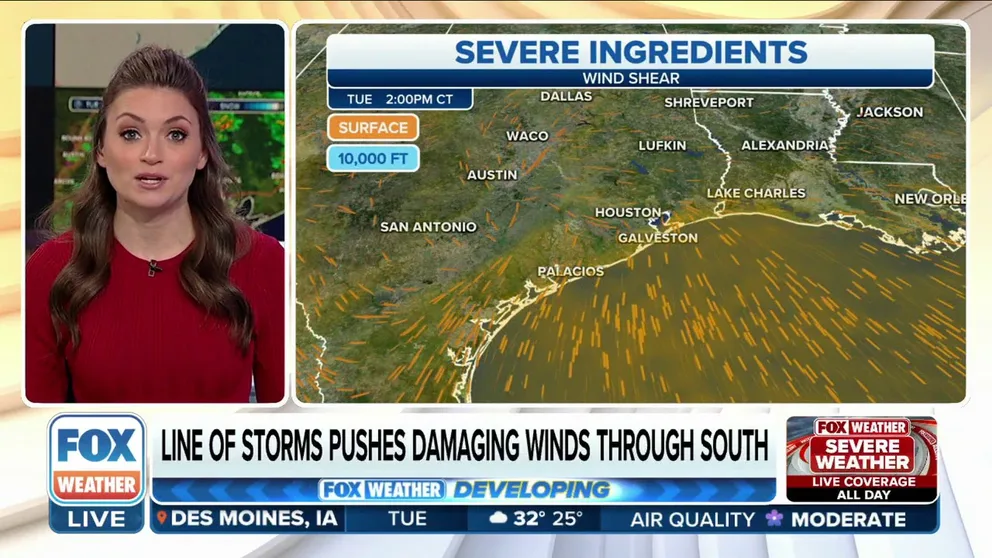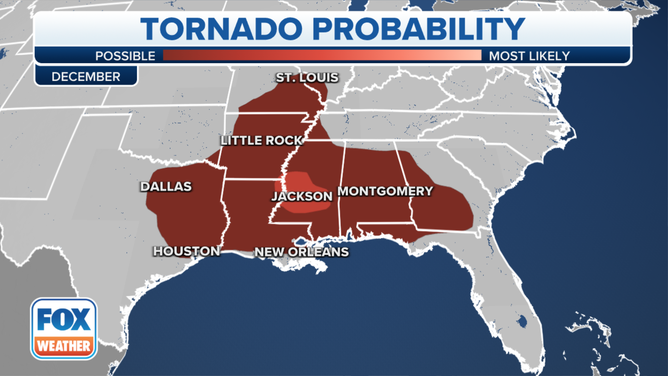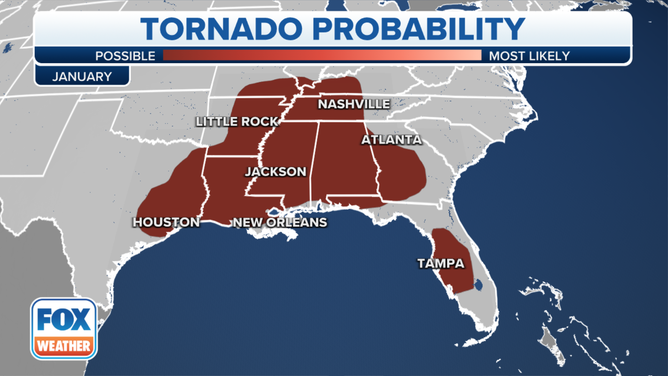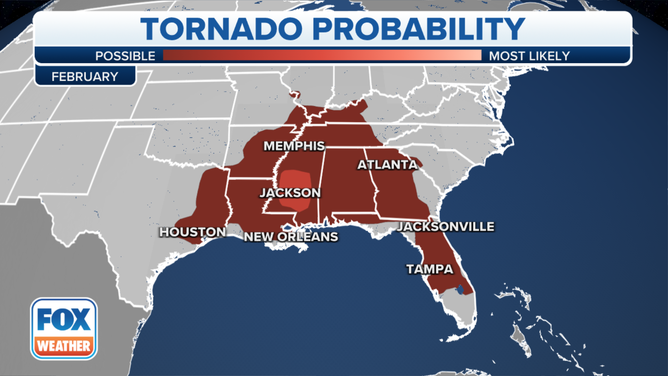Can a tornado happen in the winter?
Several ingredients need to come together for tornadoes to form, including wind shear, warm temperatures and high humidity. This doesn't happen too often in the north but is more common in the southern U.S. in the winter months.
What is driving the severe weather and tornado threat in the South Tuesday?
FOX Weather's Britta Merwin explains how wind shear will allow for thunderstorms to rotate during severe storms in the South on Tuesday.
Many people often think that tornadoes only occur in the U.S. during the warmer months, but it’s not out of the question for severe thunderstorms to spawn catastrophic and deadly tornadoes that sweep across parts of the country during the winter.
It’s happened before.
Do tornadoes form in the winter?
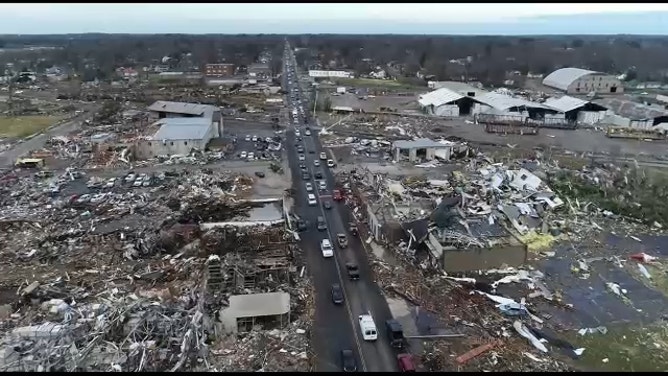
Drone footage on Dec. 11, 2021, shows devastation after a tornado hit Mayfield, Kentucky, on Dec. 10, 2021.
(Michael Gordon / SCV)
The EF-4 tornado that destroyed much of Mayfield, Kentucky, in December 2021. That tornado had winds of about 190 mph and was on the ground for nearly 166 miles. That led to the National Weather Service issuing a rare Tornado Emergency.
Most recently, a tornado outbreak was reported across parts of the South on Jan. 12. Several tornadoes touched down and caused significant damage in Selma, Alabama. Another tore through Autauga County, Alabama, and killed at least seven people.
Three Tornado Emergencies were issued during this tornado outbreak.
HERE'S WHERE TORNADOES ARE MOST LIKELY TO OCCUR IN EACH MONTH
How do tornadoes form during the winter?
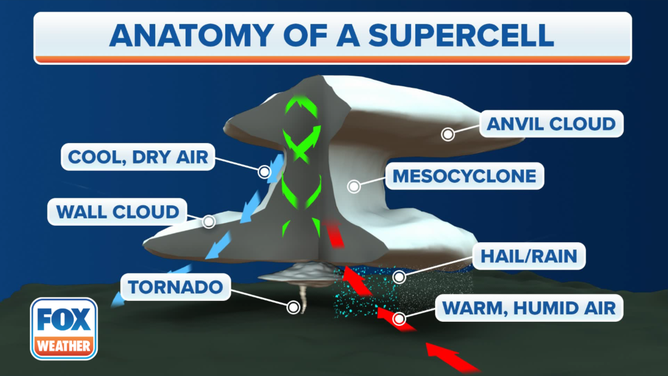
An image showing the anatomy of a supercell thunderstorm.
(FOX Forecast Center / FOX Weather)
For tornadoes to form, a few things need to happen.
One of those things is wind shear.
Wind shear involves changes in wind speed and/or direction with height. Think of it as a series of freeways crisscrossing over each other, sending the traffic in different directions. This can be thought of in the same way, but instead of cars, it’s the wind direction that changes as you get further up into the jet stream.
Jet streams are narrow bands of strong winds in the upper levels of the atmosphere that blow from west to east, but the flow can often shift to the north and south, according to the National Weather Service. In addition, the jet stream follows the boundaries of hot and cold air. Since hot and cold boundaries are more pronounced in the winter, that leads to the strongest jet stream.

FILE - An apparent tornado moved through Kansas.
(Oz Banks)
Warm temperatures are also an essential ingredient that helps to allow tornadoes to form. When the ground warms up, the heat will rise into the atmosphere. That motion aids in the development of thunderstorms. Warm temperatures during the winter are more uncommon the farther north you go – the northern tier of the U.S., the Northeast and New England. They're more commonly found farther south in the U.S., like along the Gulf Coast.
There also needs to be abundant moisture in the atmosphere. Humidity from the Gulf of Mexico that flows north into the South, Plains and even the Midwest can also aid in developing supercell thunderstorms and tornadoes.
WHERE ARE TORNADOES MOST COMMON?
Where do tornadoes form during the winter?
So, where are twisters more likely to form during the winter months?
Data from the FOX Forecast Center shows that in December, tornadoes are more likely to form across the Deep South from East Texas, the Mississippi Valley and along the Gulf Coast into Alabama, Georgia and Florida.
Heading into January, those same areas are included in the tornado risk, but more portions of Florida, like the Tampa area, see an increased risk.
More locations are added to the risk zone in February and March as winter ends, and spring arrives.
The risk for tornadoes in March extends from the Plans through the Midwest and across the Southeast.
